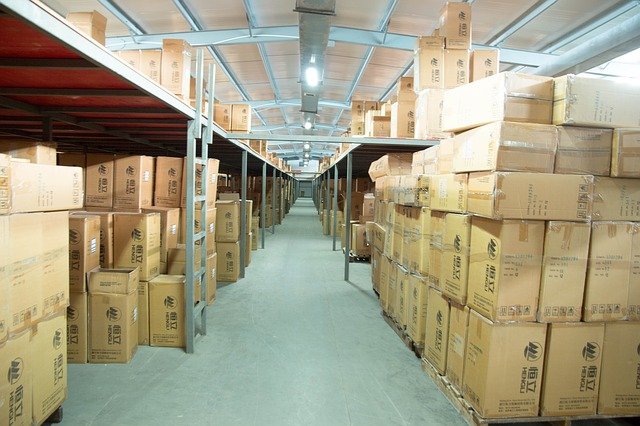 By Neil Griffiths
By Neil Griffiths
Warehouse environments are hectic places at the best of times. The sheer amount of people working under one roof to process packages, move freight and load and unload vehicles means that safety must be considered at all times if incidents are to be avoided. Turning a blind eye to potential safety risks and failing to encourage and maintain safe behaviour among staff could lead to serious harm or injury.
For some companies, safety can slip as they race to create a more efficient, first class service for customers. Simply seeing safety management as a ‘tick in the box’ that doesn’t need to be revisited or revised carries a high level of risk, especially during busy periods. It is at times of increased demand that incidents are most likely to happen and promoting best-practice is vital.
It is important to take a holistic approach to the management of health and safety by considering the task, the working environment, equipment used and the person carrying out the task. Good practical safety standards combined with safe behaviour should therefore be part and parcel of an efficient warehouse operation.
Safety experts are more and more looking at the use of technology to mitigate safety risk and reduce the risk of human error. For example, supplying all operatives with technology that monitors their movement and posture means training needs can be quickly identified and addressed.
Accidental vehicle drive away is a significant safety risk and relies upon safe systems of work being strictly followed by warehouse and driver teams. Technology is available which can reduce the risk of human error and prevent a potentially serious incident.
This commitment to look at new ways to reduce safety risks makes good business sense as any incident could injure a valuable member of the warehouse team and affect operational efficiency. Being aware of existing hazards and how to avoid them is only half of the story. Warehouse operatives are in an ideal position to report on ‘near misses’ or situations where an incident may have occurred. This then allows managers, employees and health and safety experts to assess how a process or working practice needs to change in order to reduce or eliminate the risk.
Warehouse spaces are lively by nature and although health and safety measures are implemented as preventative steps to protect employees, sometimes incidents do occur. There is a strict protocol that should be followed to investigate, identify the causes and introduce corrective or preventative action. The investigation should capture information about what happened, who was involved, when, where, how and why the incident occurred. Interviewing everyone involved is a crucial part of the investigation process. Attention to detail here helps get to the root cause of the incident quickly and lead to an analysis of how the incident could have been prevented and whether procedures need to be reviewed and revised.
Workers must also feel there is an open forum where they can raise issues as they see fit. Regular safety improvement groups to address health and safety matters involving staff, management and safety representatives is a great way to encourage this.
Managers can also facilitate discussions by encouraging teams to meet in ‘huddles’ before each shift begins. If staff have any safety concerns, they can raise them in this forum, allowing management to review existing procedures and make changes if necessary. A more informal setting such as this allows individuals to be more open about sharing any issues they have. Rather than ‘blowing the whistle on colleagues’, management can steer the discussions in a non-provoking manner to remind staff of safe working practices.
Suitable Personal Protective Equipment (PPE), whilst issued as a last resort is also important and involving staff as much as possible can pay dividends here. It makes sense to trial any proposed changes to personal protective equipment and find out the views of the employees who will wear it and establish if it is suitable for the task undertaken.
Warehouses incorporate a number of different vehicles in order to aid the movement of goods around the building and guidance on usage must be strict. For example, the operation of vehicles like forklift trucks should only involve trained and accredited operatives who are regularly assessed, with absolutely no exceptions. Advice about accreditation can be obtained from the Accrediting Bodies Association for Workplace Transport, which has recently taken over the Health & Safety Executive’s (HSE’s) responsibilities in this area.
Safety doesn’t stand still. There is always room for processes and procedures to be improved to safeguard employees and create an efficient and safe warehouse operation. Maintaining robust safety procedures, managers leading by example, adopting technological innovations in health and safety and encouraging safe behaviour among staff should create a positive safety culture. Prioritising health and safety will protect a company’s most important asset – its people and reduce the risk of safety incidents and the resultant cost. Good safety is simply good business.
Neil Griffiths is director of health, safety and environmental at TNT
Approaches to managing the risks associated Musculoskeletal disorders
In this episode of the Safety & Health Podcast, we hear from Matt Birtles, Principal Ergonomics Consultant at HSE’s Science and Research Centre, about the different approaches to managing the risks associated with Musculoskeletal disorders.
Matt, an ergonomics and human factors expert, shares his thoughts on why MSDs are important, the various prevalent rates across the UK, what you can do within your own organisation and the Risk Management process surrounding MSD’s.


